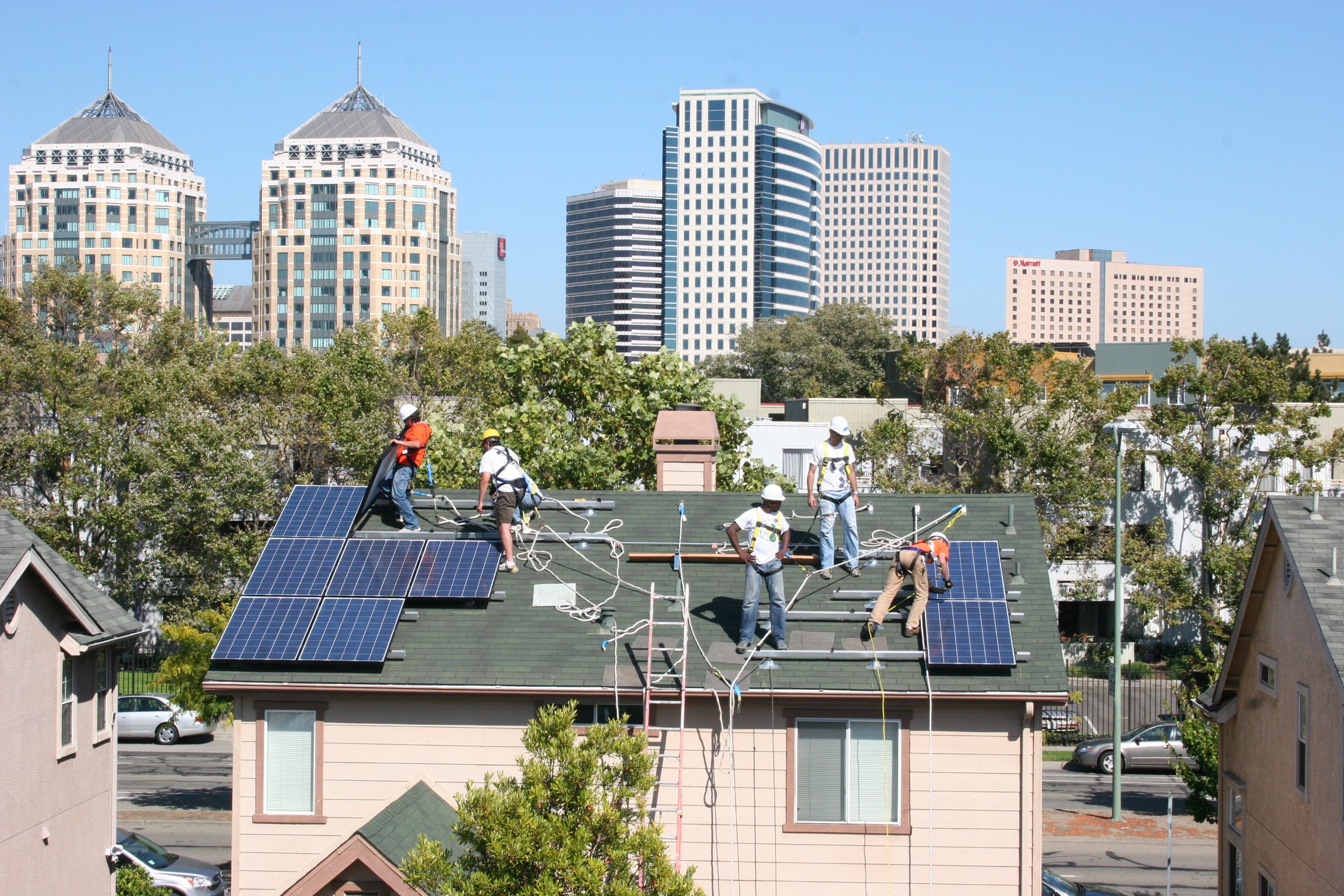
Clean Energy has an Equity Problem
Racist housing and industrial policy have long steered fossil fuel pollution into communities of color, which now face growing climate change threats such as flooding and extreme weather. These households are often forced to spend three times more of their income on energy bills than average households yet remain largely locked out of the growing clean energy economy.
A rapid, equitable transition to a world powered by clean energy that benefits everyone will only be achieved within a framework of social, economic, and environmental justice.
Why it Matters?
-
Affordable Housing
Energy affordability is housing affordability. In the US, inadequate housing, infrastructure, and race-based housing policies, such as redlining, have subjugated low-income and communities of color to less efficient and healthy housing options. These neighborhoods are also disproportionately vulnerable to climate change threats such as pollution, flooding, natural disasters, extreme cold, and heat. Housing units that belong to these neighborhoods, tend to be of older stock, lack proper maintenance and investments by landlords, and contain lower quality building materials and less efficient appliances, all of which increase energy costs.
-
Health Impacts
High housing and utility costs lead households to make difficult tradeoffs between paying their utility bill or affording housing, food, and healthcare costs. Nearly one in five households forgo basic health and food needs to pay energy bills. These tradeoffs can cause stress, hunger, respiratory illness, and heat and fire risk that can compromise childhood health and development and threaten the lives of people with chronic illness and those living on life-support. Energy-burdened households are at a 150-200% higher risk of transitioning into or extending economic poverty than non-burdened households.
-
Economic Opportunity
Directing local rooftop and community solar capacity to low-to-moderate income households and renters could reduce energy cost burdens for millions of households.
With more than 1.7 million new renewable energy jobs expected over the next 10 years, it is critical that investments are made to create career and leadership pathways for those who are underrepresented in renewable energy industry, including women, people of color, Indigenous Tribal members and individuals impacted by the criminal justice system.
Reducing electric bills through solar savings can act as a buffer against increased food, housing, and other unexpected costs.
The existing inequities in infrastructure that cause energy insecurity in the US, jeopardize communities' health, safety, and stability. As a result, these same inequities increase vulnerability to the disproportionate impacts of climate change. An equitable clean energy transition requires intentionality in addressing the systemic structures that perpetuate inequities in access to clean energy benefits, economic opportunities, and healthy living conditions. Climate solutions must consider equity in infrastructure by investing in solutions that increase housing affordability and expand access to the clean energy economy through job training and sustainable job creation for those underrepresented in the field.
Solar can produce significant energy cost savings and reduce building emissions, creating more affordable, cleaner, and healthier housing options. Unfortunately, the low-to-moderate income sector often does not have available capital for cash purchases, experiences credit barriers, owner/tenant split incentives, and has historically been dismissed by investors and lenders as high-risk. This results in uneven clean energy adoption and distribution of benefits.
Energy Resilience Fund loan fund believes that overlooking these communities in our push toward a clean energy future is the greatest risk of all. With the capital to deploy clean energy technologies in this sector of the market, households can save on utility bills, building owners can invest in infrastructure updates, indoor air pollution can be reduced, and communities can build wealth. All of which can help communities respond and adapt to climate change.

“The money we don’t spend on the utility bill is going toward other normal monthly expenses. Whatever money is being saved is used by other things. As you know the cost of fuel has gone up and inflation has impacted things. The savings from the program have been a helpful buffer.”
- Community Solar Participant (2021)
